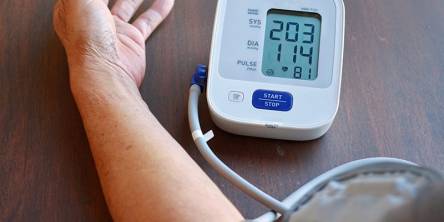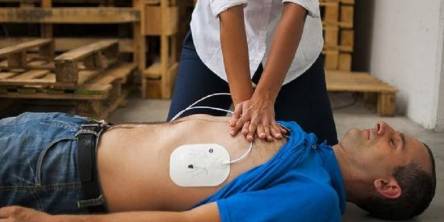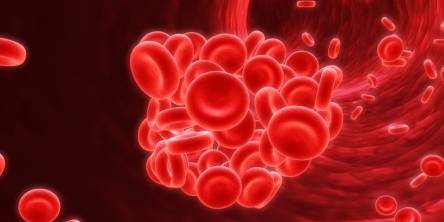What Is a Diabetic Stroke?

According to statistics, people suffering from diabetes are 1.5 times more likely to develop a stroke than those who don’t have this disease. So why does it happen? The connection between these two conditions lies in the way the body transforms glucose into energy. The food we eat is broken down into glucose, which enters the blood flow and gets to cells all over the body after the food is digested. The body needs insulin produced by the pancreas for glucose to enter cells and get transformed into energy. In patients with diabetes, the pancreas doesn’t produce insulin or the cells don’t use insulin in the right way. All that makes diabetic patients have too much glucose in the blood while the cells don’t get enough energy. Gradually, this glucose is accumulated into fatty deposits on the blood vessel walls and progresses into atherosclerosis. These fatty deposits form atherosclerotic plaques that, when tearing off, can narrow or block the arteries and vessels in the neck or brain and thus interfere with blood flow and cause a stroke.
Stroke is a condition that requires emergency medical care regardless of whether a person has diabetes or not. Therefore, it’s important to know stroke symptoms to be able to act immediately:
- Sudden numbness or weakness on one side of the body
- Sudden unexplained and severe headache
- Sudden inability to move any part of the body
- Short-term loss of consciousness
- Loss of balance and coordination, dizziness
- Sudden difficulties swallowing
- Sudden blurred vision or trouble with vision in one or both eyes
- Difficulties in pronouncing or understanding words or simple sentences, confusion
- Trouble talking
Diabetes increases the risk for stroke; however, there are other risk factors for a stroke that can make the chances of developing this condition even higher:
- Being over 55 years of age
- Having hypertension or other heart diseases
- Having a past medical history of a transient ischemic attack or a stroke
- Having a family history of heart disease, stroke or transient ischemic attack
- Being overweight
- Lifestyle risk factors like smoking, excessive alcohol consumption, poor nutrition and diet, lack of physical activity
- Having carotid artery disease
- Having high cholesterol levels
Some of these risk factors cannot be changed like age or family history; however, an individual can lower his or her chances of suffering a stroke by controlling such risk factors as obesity or poor physical activity and, of course, taking care of diabetes if having this disease.
There are a number of recommendations that can help lower stroke risk in diabetic patients:
- Physical activity. Any exercise that improves blood circulation is good for the health. Everyday exercising like swimming, brisk walking, cycling, etc. can lower the chances for a stroke.
- Quitting smoking. The risk of stroke is 2 times higher in those who smoke in comparison to those who don’t smoke.
- Dietary changes. Since high blood pressure and elevated cholesterol increases the risks for stroke, it’s worth taking them under control by making changes to diet and nutrition. The following tips can help:
- Reducing consumption of fats and salt
- Substituting fish for red meat
- Eating more beans, vegetables, and nuts
- Eating foods with low added sugar content
- Replacing white bread with that made of whole grains
- Eating at least 14 grams of fiber for every 1,000 calories consumed
- Limiting alcohol consumption. It’s better to limit alcohol intake to no more than one drink a day for women and two drinks a day for men.
Sticking to these recommendations can help prevent heart disease not only in diabetic patients but also in seemingly healthy people.
Similar Articles
Heart disease claims the lives of 9 million people every year. There are lots of small habits and lifestyle choices that can have a negative impact on the health of our hearts, especially when they are amplified over the course of a lifetime
It can be difficult to know when you have high blood pressure because the symptoms and signs are not always obvious. If left unchecked, however, it can gradually damage your blood vessels, heart, kidneys, and other vital body organs. Blood pressure fluctuations can also be dangerous.
A reliable AED plays a vital role in increasing the survival rate of SCA. This post lists 8 reasons to tell why we need a reliable AED device and something you need to know about the AED.
Normal heart rate in people is 60-100 beats per minute. But if the heart rate is lower than 60 beats per minute, that may indicate bradycardia development. If the pulse is constantly 30-40 beats per minute and it doesn’t increase even during physical activity, it’s a quite dangerous condition.
In recent decades, Western medicine has shifted its main focus quite dramatically, from infectious diseases towards cancer and chronic conditions, such as heart, stomach and liver issues.
Black, green, white or red teas come from the same plant Camellia Sinensis. The difference lies in the processing method: Green tea is made from the buds and top two leaves of a shrub, which are then quickly steamed to prevent fermentation
Blood clotting is a necessary process that in certain instances prevent the body from losing too much blood. When you get a paper cut or a minor injury, a blood clot stops the bleeding and falls apart.







